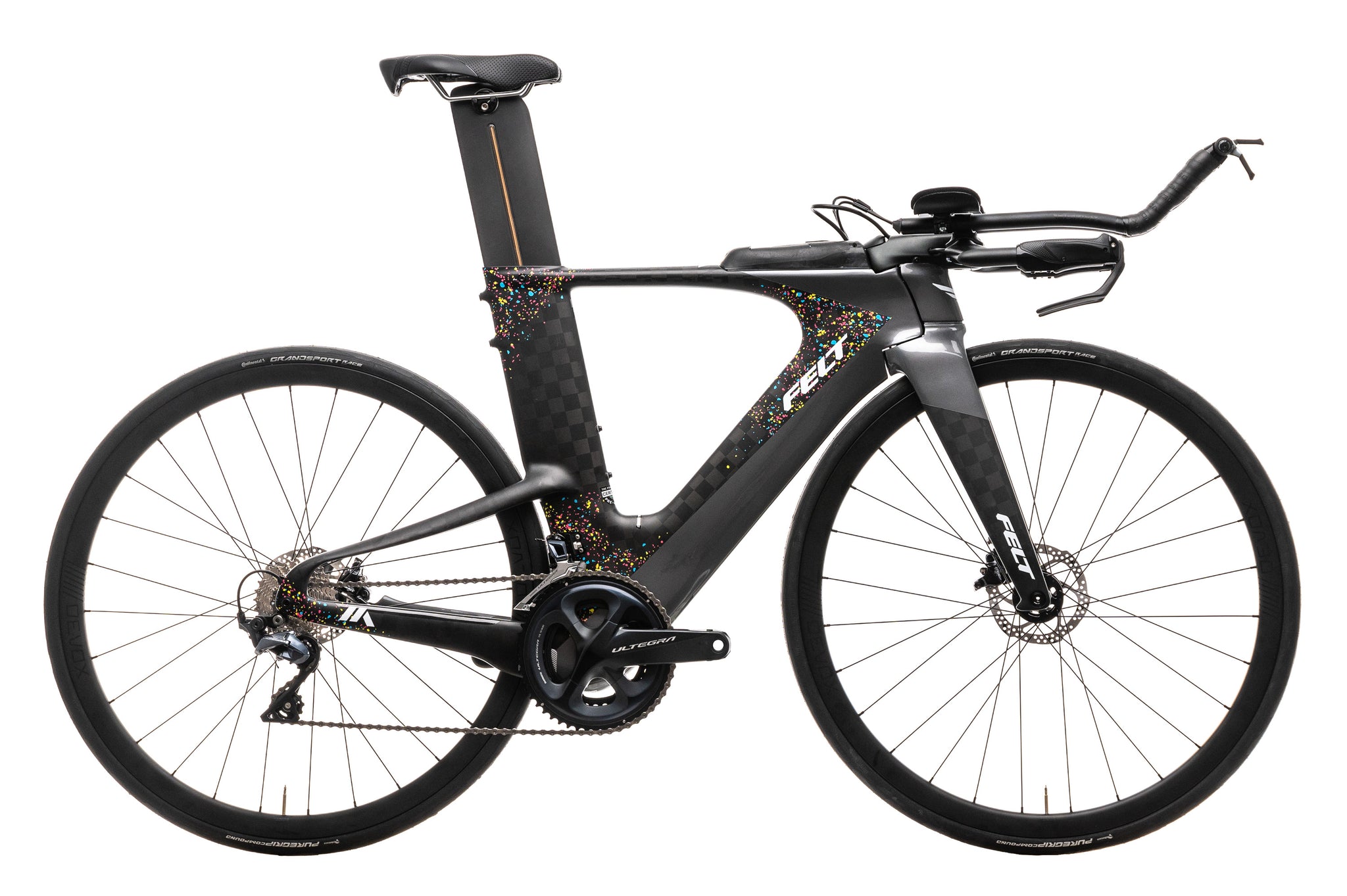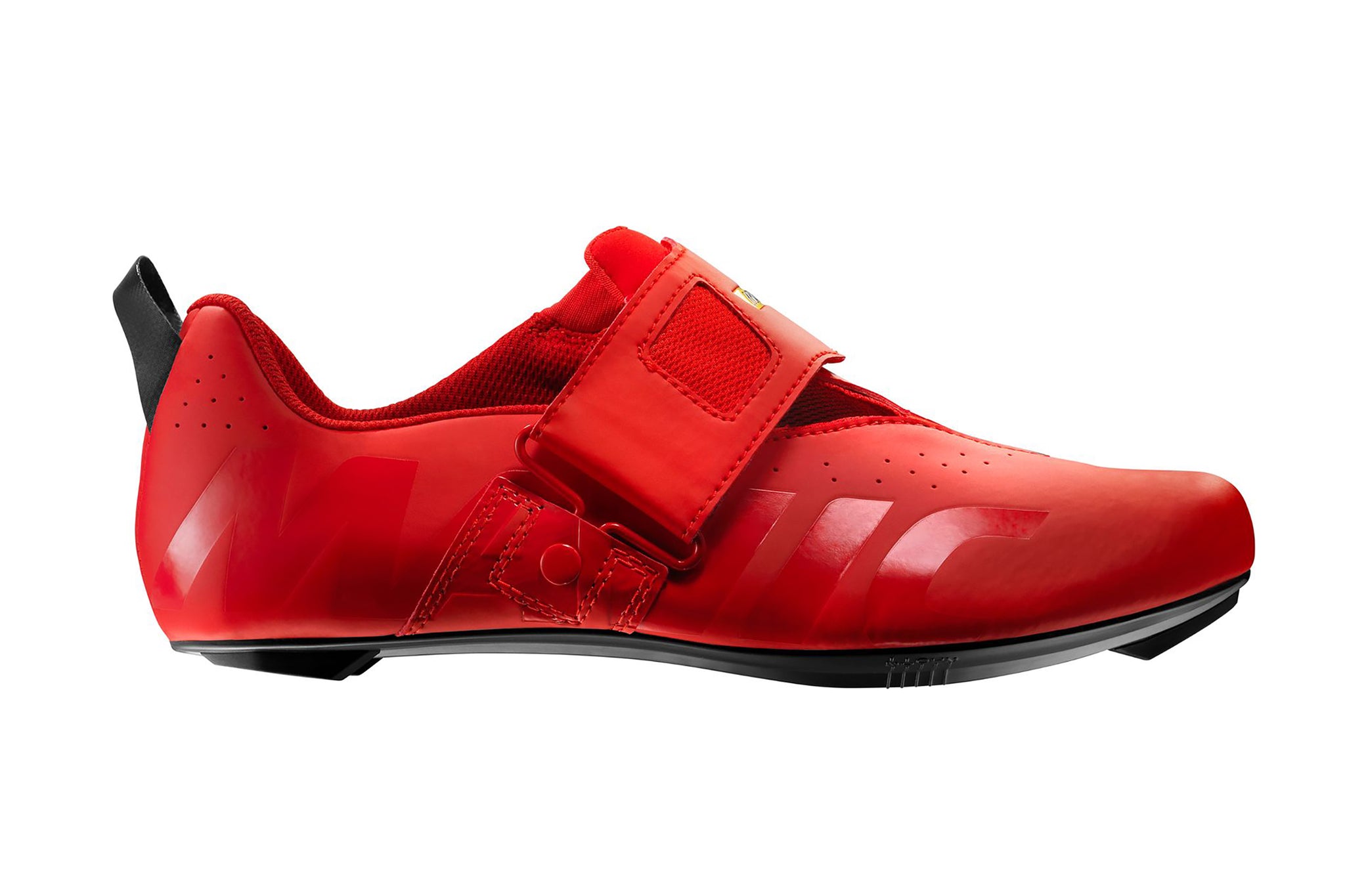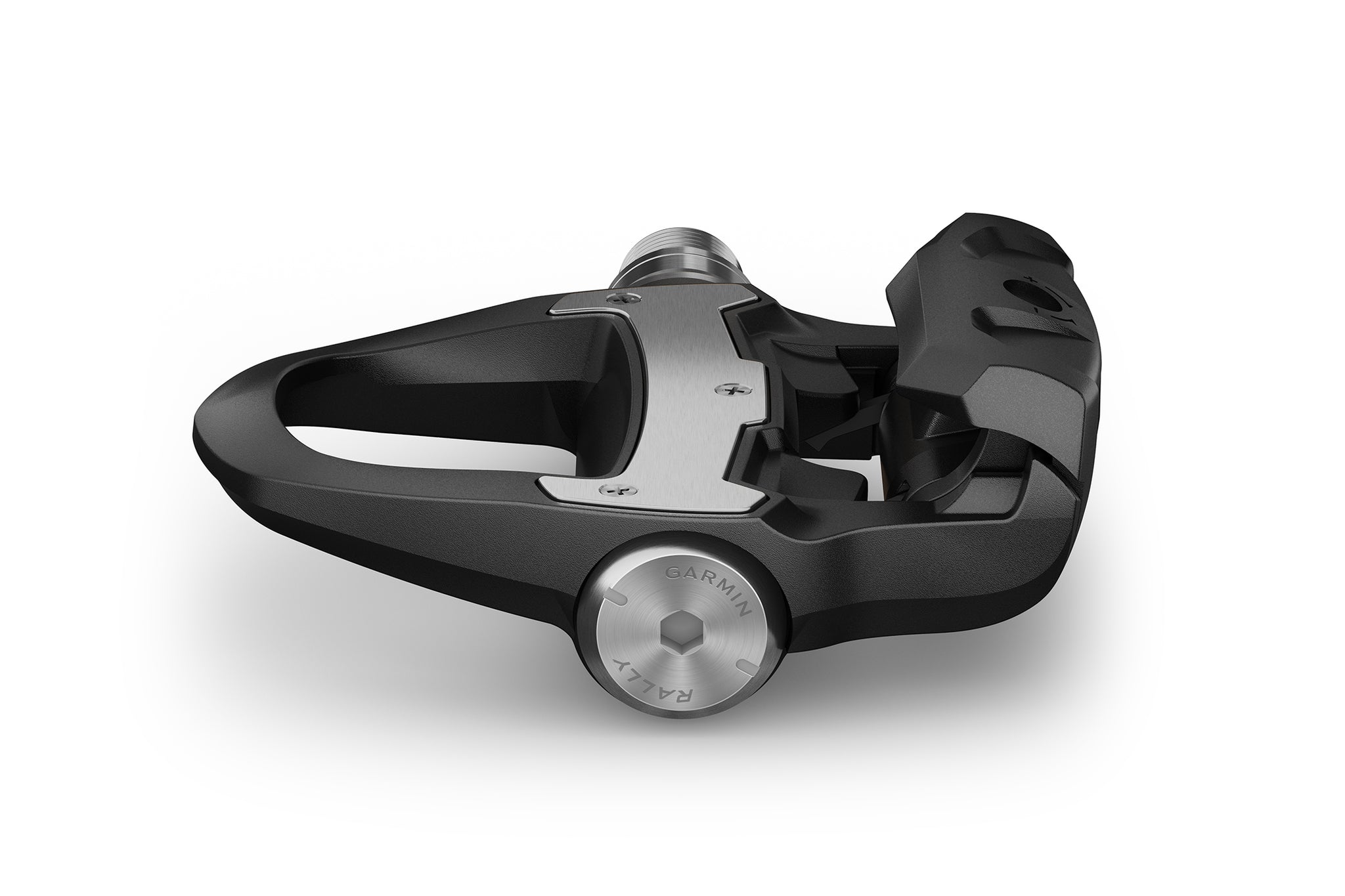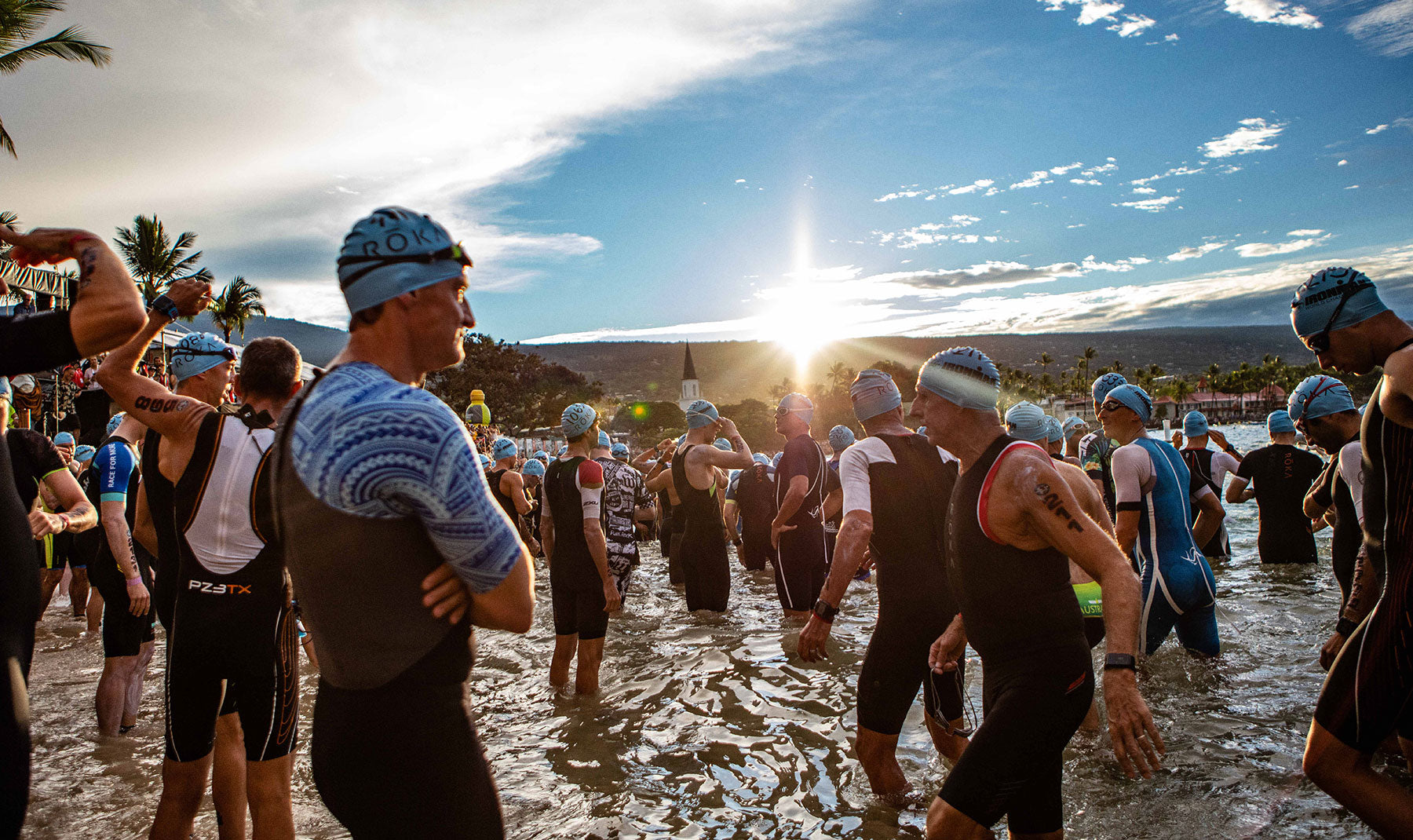 Photo: Eric Wynn | Slowtwitch
Photo: Eric Wynn | Slowtwitch
It’s true what they say — triathlon requires a lot of “stuff.” After all, it’s three sports in one. But before you go all-in on absolutely everything, what do you need? Here are our suggestions for what to buy right away, and what to put off, mostly focusing on bike needs.
Do I need a tri bike?
Maybe you’ve done a duathlon or just like the idea of trying a sprint-distance triathlon. Do you really need to purchase a whole different bike? The easy answer: Not yet. In fact, don’t buy a tri bike until you’ve done a couple races. If you fall in love with the sport, then you can start your tri bike search. But, plenty of people do triathlons with road bikes and either add clip-on aero bars, or just ride in the drops. Aerodynamics is key in the bike portion of a triathlon, but new athletes just need to learn what it’s like to be out there. Being aero should be low on the list of priorities.
After your first couple races, when you’re fully committed, spend some time testing out a few tri bikes. There are all kinds of bells and whistles — some of which might seem essential, and some you can probably do without. This usually comes down to comfort, and the race distances you prefer.
SHOP ROAD BIKES | SHOP TRIATHLON BIKES
Our top triathlon bike picks
Felt IA Advanced Ultegra
Athletes have ridden this bike to six Kona World Championships in a row. Felt’s IA has been used to set new bike course and overall course records across the lava fields of Hawaii. It’s the most aerodynamic bike in Felt’s history. The primary material is UHC (“Ultra Hybrid Carbon”) Advanced fiber, which is high-modulus, meaning that it’s light and incredibly stiff for pedaling efficiency and handling precision.
Canyon Speedmax CF SLX 9.0 LTD
It doesn’t get much faster than this Speedmax CF SLX 9.0 LTD. Equipped with the best components from Shimano Dura-Ace Di2, to Zipp 858 NSW wheels to help you perform at your best on your next triathlon — this is close to perfection. The cockpit was developed with Ergon, and provides maximum adjustability.
Dimond Billiant
Check out our article on non-double-diamond bikes (linked below) to learn more about the design of this stand-out. It’s a bike that set the fastest bike split at the Ironman World Championship in Kona, Hawaii in 2015. The Brilliant showcases the Superfork, which unites the front end of the bike, eliminating tubes, which cuts down on drag. This drastically improves aerodynamics and aesthetics, allowing for ease of access to the brakes via a secure, magnetic closure.
Read about why some triathlon bikes look a little different than most.
What accessories do I need?
The bike portion of a triathlon is the best and easiest place to get calories and hydrate. So you need storage. Whether you plan to eat solid food (bars and chews), gels, or liquid calories, you’re going to need bottles, bottle cages, and some kind of storage for food. There are a variety of bar bags out there, and top tube nutrition carriers. Even if you’re not terribly worried about aerodynamics, you’ll want a compartment that’s easy to access with one hand.
It’s also great to have a watch that’s specific to triathlon, so that you can track all three disciplines — plus transitions — all in one place. Our overall recommendation for a multi-sport watch is the Garmin Forerunner 745. This watch makes everything simple. It provides elevation changes with a built-in barometer; altimeter, and electronic compass help you keep your bearings. It also includes a wrist-based heart rate monitor, and keeps track of your FTP and VO2 max.
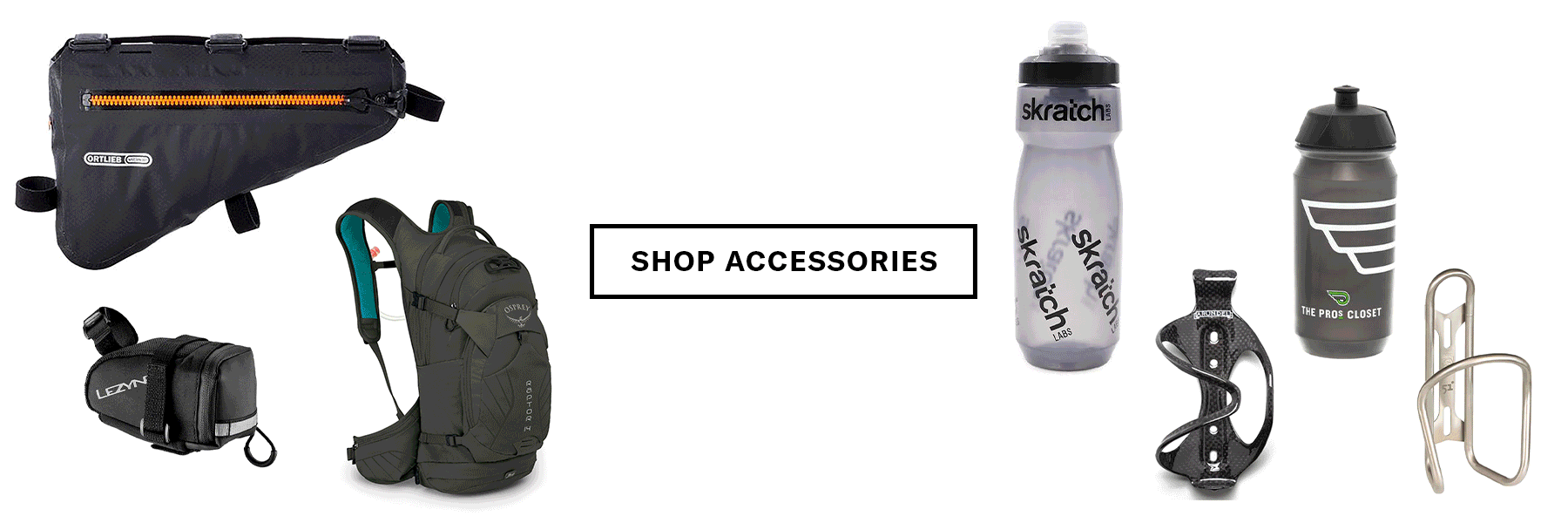
What should I wear in a triathlon?
We highly recommend that whether you’re new to the sport or several seasons in, invest in a good tri suit. It’s the only thing that will be with you for every leg of the race, and is critical in making transitions smooth. A tri suit is specifically designed for racing the swim, the bike, and the run. It can be a one or two-piece suit, and is fast drying. It includes a thin chamois that makes the bike leg comfortable, but doesn’t get in the way on the run. We love Pearl Izumi’s Team Tri Octane Suit for men, and Coeur’s 2.0 Women's Sleeved One Piece. A tri suit should be tight but not restrictive.
Triathlon shoes
When choosing cycling shoes for triathlon, think simple. You’ve probably seen the pros keep their shoes clipped in and secure themselves, or take their shoes off, as they’re getting on and off the bike. This takes some practice! Whether you’re putting your shoes on in the transition area, or a few meters down the road, you want simplicity.
Mavic Cosmic Elite Tri Shoe
The Energy Comp outsole of the Cosmic Elite Tri shoe is a fraction more flexible than the full carbon version used in the Cosmic Ultimate, so comfort is increased, but without compromising much on power transfer. The Cosmic Elite Tri features our Ortholite inner sole for added support, but it retains the tri-specific design features used in top-of-the-range shoes. These include the large, easily adjustable strap and oversized heel loop for quick transitions and a lightweight mesh upper for fast wicking when you come out of the water.
Triathlon pedals
Every bike needs pedals, but what kind is best? Again, when you think about triathlon accessories, and what you’ll use throughout your race, everything should be as easy to use as possible. You don’t want to be wasting time trying to clip in or out of your pedals — you don’t even want to think about your pedals!
Shimano 105 PD-7000 pedals
These are popular for all kinds of road bikes (not just tri bikes). They’re durable, smooth, and fairly easy to get into and out of on the go thanks to adjustable spring tension. And they come in at 265 grams, which will help you with the whole not-thinking-about-your-pedals thing.
Speedplay Zero pedals
These might be the lightest and easiest to use pedals out there. There’s a reason they’re called “Speedplay.” Coming in at just 207 grams, they really will feel speedy. And because they’re dual-sided, they’re incredibly easy to clip into and out of.
Power meters for triathlon
Certainly you don’t need a power meter for triathlon, but one will help you get the most out of your training. Riding with a power meter allows cyclists to consistently and accurately monitor their workload, track progress, and pace efforts during important events or races. When you’re tackling that wicked headwind you can see how hard you’re actually working. And also, data can be fun!
SRAM Red AXS Power Meter Crankset 172.5mm 48/35t Direct Mount DUB
This is the lightest power meter-equipped crankset SRAM has ever made because the meter is in the rings. With and +/- 1.5% reading, it’s considered very accurate. The cranks can also easily swap to a 1x setup by installing the direct mount aero rings or non-aero spider to the same arms.
Rally RS100 Single-sensing power meter
Rally power meters are tested to the extreme. The Single-sensing RS100 measures total power, cadence, left/right balance and where in the pedal stroke you’re applying power to help you ride more efficiently. Compatible with SHIMANO SPD-SL cleats, the pedals install like any others and are easy to transfer between bikes.
Stages power meters
If you want an easy way to add a power meter to your bike, Stages is a great option. While it offers dual-sided power meters, Stages's most affordable and original offering is the single-sided crankarm power meter. All you need to do is swap out your left crankarm and you'll have a lightweight and reliable power meter.
The other disciplines
Like biking, the other two disciplines of triathlon (swimming and running) also require key accessories, even for beginners. Like we mentioned earlier, a tri suit is great because it cuts down on the need to change clothes, and keeps you streamlined for the entire race. Depending on the time of year and the temperature of the water, you might need a wetsuit. And if you do, some multi-sport stores will rent them.
There’s no getting around the need for goggles and sunglasses — eyewear is pretty essential for the entire race. Not only do you want protection from the sun, but also protection from debris. Luckily, you can use the same sunglasses for biking and running. Be sure to check with your specific event, to see what’s required, what’s allowed, and what’s not allowed. Every race is different, and has unique rules and regulations.
Conclusion: Get triathlon gear that makes things easier
There’s a lot to think about, and a lot to keep track of in triathlon. That’s why you should pick equipment and accessories that work for you. The less you have to think about your stuff, the better. There are always things you can add, and upgrades you can make progress, but in the beginning, just get what you need and enjoy the race. As you gain experience, we’ll be here to recommend equipment that will help take you to the next level.
We meticulously (and independently) pick every product, and if you purchase through our links we may earn a commission.


